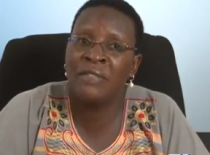IRC country director of Uganda, Jane Nabunnya Mulumba reflects back on 2014 and sets her goals for the coming year: building on the legacy of Triple-S and reaching the national targets for water and sanitation coverage
Published on: 30/01/2015

My wish for 2015 is to reach the national targets for water and sanitation coverage. As of June 2014, the population with access to safe water in urban areas was at 72.8% and 64% in rural areas. Both situations fall short of Uganda's national targets of 100% for urban and 77% for rural areas, by 2015.
Regarding sanitation, the national latrine coverage was 74.8% as of June 2014, while hand washing with soap was at 32.8%. The national sanitation statistics fall short of the 2015 targets of 100% for latrine coverage and 50% for hand washing with soap.
The saying that water is life may sound overused, but it holds true.
Up to 36% of the population has no access to safe water; over 68% have no access to sanitation facilities and a whopping 67% do not wash their hands at the prescribed critical times. The health risks are inconceivable!
Increasing the population's access to safe water and sanitation facilities will ensure that the disease burden in Uganda is reduced significantly. Statistics show that over 70% of the diseases afflicting the population are related to water and sanitation. If people practiced proper hand washing as recommended, diarrhoeal diseases would reduce by 45 %.
With a combination of approaches and committed sector actors, 2015 will be a better year in terms of improved water and sanitation services. Who knows, we may just reach and even supersede the national targets!
Failure to attain the national targets is rooted in numerous challenges which should be addressed urgently. Some of the key areas that require attention are:
Over the past five years, IRC through the Triple-S initiative has contributed to the improvement of rural water service delivery and in particular improvement of functionality of water supply facilities in the two pilot districts of Lira and Kabarole. The whole range of IRC / Triple-S experiments of innovations to address service delivery challenges were welcomed, tried and tested in the sector. Some of the experiments have been documented and embedded in key sector documents.
Throughout 2015, IRC will continue to promote those innovations, working with key players in the sector like the Ministry of Water and Environment, UWASNET, the umbrella organization of NGOs in Uganda, and many others. I believe that the scaling up of those approaches will result in continued improvement in terms of coverage, access and functionality of WASH facilities. Through the national sanitation working group, IRC will continue contributing towards continuous improvement of sanitation services.